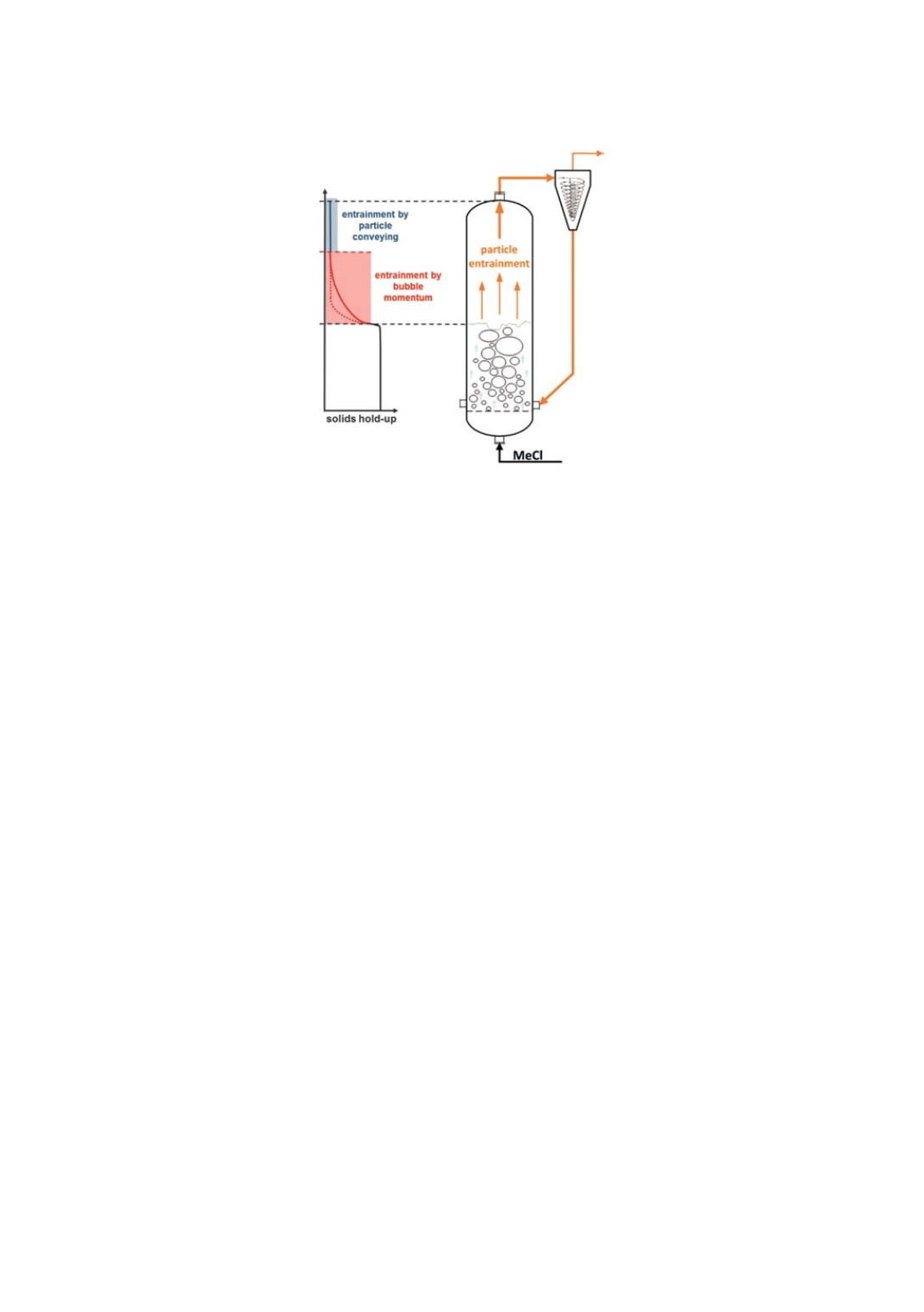

Figure 8
: Particle entrainment in fluidized-bed reactors
As is shown in Figure 8, the solids concentration in the fluidized bed is almost constant
up to the bed surface. At the bed surface, particles, independent of particle size, are
thrown into the freeboard by means of bubble momentum, which mainly depends on
the fluid-dynamic parameters bubble size and velocity. On their way up, bigger
particles fall back to the fluidized bed, so that the solids concentration decreases with
increasing height. At the same time, screening of particles takes place. At a certain
distance, at the transport disengagement height [6], the screening process is almost
finished, so that the solids concentration remains constant until the outlet is reached.
Particle entrainment at this stage mainly takes place by particle conveying only,
depending on the superficial gas velocity.
Thus the particle entrainment model has to consider both mechanisms, the height-
dependent influences caused by bubble momentum and that caused by particle
conveying in order to calculate the particle mass flow rate and the particle size
distribution. The applied model Equation 13 comprises both entrainment mechanisms
to calculate a resulting mass flow rate for each particle class
i
, related to the free cross-
sectional area,
A
cs
[14]. The overall entrained solid mass flow rate then results from the
summation of the individual flow rates, and the particle size distribution is calculated
from the corresponding mass fractions.
(
)
(
) (
)
[
]
i
i
i
cs
i
entr
Q k
ah
Q E A m
,3
,
,3
0
,
exp
Δ⋅
+ − ⋅
Δ⋅
⋅
=
∞
(13)
The first term in the Equation 13 represents the height-dependent entrainment flux of
the particle class
i
. Here,
E
0
is the entrainment flux directly at the fluidized-bed surface,
weighted by the mass fraction of the corresponding particle class. The decrease of the
entrainment flux with increasing distance from the surface
h
is modeled by means of
the dumping coefficient
a,
which is fitted and validated based on experimental pilot
plant data. Though it turned out that the dumping coefficient, and therefore the
entrainment flux, strongly depend on the configuration of internals. The internals act
like precipitators on the particles, reducing the entrainment flux. Here, an exponential
dependency between the dumping coefficient
a
and the reactor’s hydraulic diameter
d
hyd
was found, which allows the influence of the internals on the particle entrainment
by the simulation model to be described.
166


















